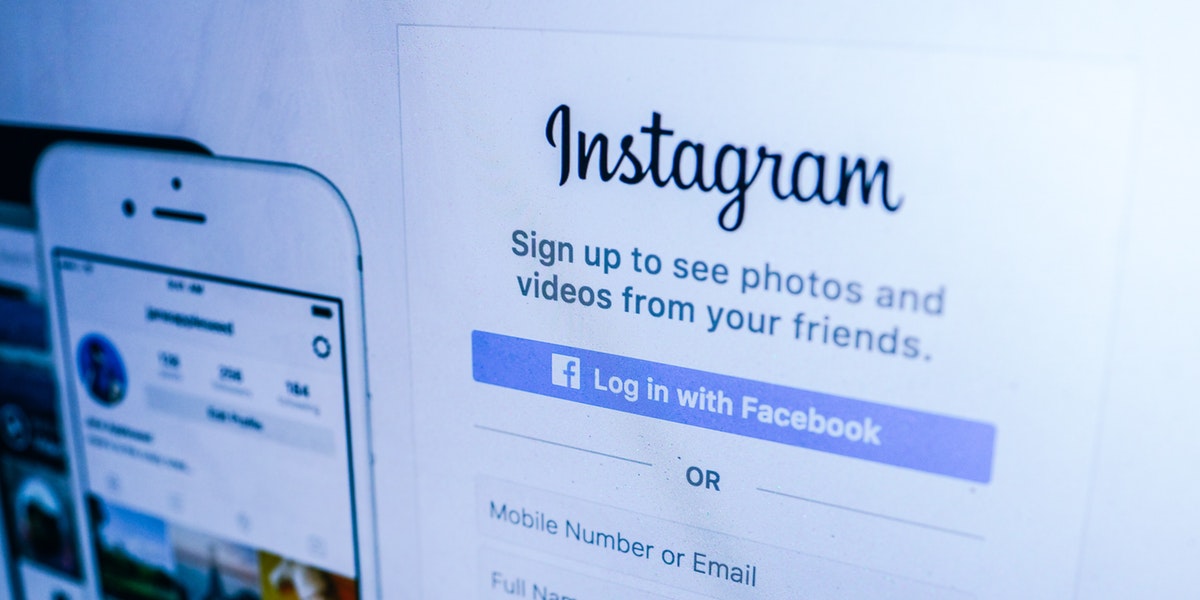
#InstaWhat?: Instagram for Social Media Marketers
Social media is part of our everyday lives, whether we want to admit it or not. Chances are, you probably have a Facebook, Twitter or Instagram — or all of the above! Pew Research Center started tracking social media usage in 2005 when just 5% of American adults used at least one platform. By 2011, half of the U.S. was using social media. And today, 69% uses at least one social media platform on a regular basis. While Facebook still leads the pack with 2.23 billion active monthly users worldwide, Instagram is closing in with a whopping 1 billion active monthly users.
One of the only mobile-focused social platforms, Instagram holds a large share of the social media landscape and is projected to keep growing.
Before we discuss how marketers can use Instagram as a social media marketing tool and the future state of the platform, let’s take it back to the beginning.
Instagram, a free, mobile photo-sharing app, launched in October 2010. And Android, iPhone and Windows phone users were immediately hooked. Selfies with in-app filters became increasingly popular, as did photos of our meals, our fur-children, that random tree in your neighbor’s yard that never looked so photo-worthy until now, and everything in between. This new app allowed you to follow your favorite celebrity on a more personal level (authenticated by the little blue checkmark) instead of just liking their fan page on Facebook or retweeting random thoughts on Twitter.
Facebook noticed Instagram’s potential and bought them out in April of 2012. By February of 2013, Instagram had 100 million users worldwide and “selfie” was Oxford English Dictionary’s word of the year. In June of 2013, Instagram launched the video function and gained an additional 50 million users by September, totaling 150 million.

Today, Instagram has just over 1 billion users worldwide, and 64% of all U.S. adults between the ages of 18 and 29 actively use this social platform — 60% on a daily basis. It is the preferred social networking platform for teens and young millennials in the U.S. and maintains a high engagement rate among its user base (average of 3.21% engagement, compared to 1.5% average across all social networks). This makes it prime real estate for social media and digital marketers. With the addition of updates like the video function, tagging in photos, location tagging for posts, Instagram Stories (a feature that blew Snapchat out of the water in 2013) and the most recent IGTV, Instagram continues to evolve with the social media landscape.
For social media and digital marketers, the possibilities for reaching their target audience and seeing real results are endless… if they play their cards right.
While advertising on Instagram is integrated through Facebook, organic marketing efforts should be strategically planned and ever-evolving. Here are a few dos and don’ts to consider when planning your strategy:
Dos:
1. Develop a hashtag strategy (and don’t be afraid to use it).
Hashtags are just search terms for social media. When used correctly, they can increase your followers exponentially while simultaneously increasing your overall engagement rate. When creating your strategy, consider which hashtags correlate to your brand, tailor them by post and use them often. However, don’t overload your caption with hashtags. Instead, comment on your post with hashtags or use the “period-return” trick to sneak them in without overwhelming your audience. Tip: Research your hashtag before you start using it, sometimes they've already been used and not necessarily for something you want your brand to be associated with.
2. Be authentic.
Develop a brand voice and stick with it. Your followers will feel mislead if your posts are all over the place and you sound insincere. It may help to think of celebrities that might resemble your brand during this process.
3. Have an aesthetic.
Whether you use the same in-app filter on every photo, or you edit your photos using a third-party photo editor, create an aesthetic and be sure you apply it to every photo you post. This may sound silly, but it keeps your content cohesive and creates a unique look for your profile. Your “look” should always adhere to your brand voice and standards.
4. Use the updates.
Many social media marketers can be scared of updates made to the platform. But they shouldn’t be! If your followers are using it, you should be too. Post to your Story to give real-time updates or just for fun. Post a question, start a poll, use the gifs and stickers. This will help you remain authentic and relevant. You should also consider utilizing the IGTV function (discussed later in this blog). While this should be more strategically planned than the Story posts, it’s a valuable tool for your Instagram profile.
5. Consider partnering with an influencer.
Instagram influencers are on the rise and many social media marketers are utilizing these #InstaFamous individuals to promote their brand in a less advertise-y way. Later.com’s “Ultimate Guide to Instagram Influencer Marketing” says “a big reason why Instagram influencer marketing is so effective is because it removes the barriers of traditional advertising and introduces your brand to a new audience via a more trustworthy source, your influencer partner. When an influencer recommends a product or service on their channels, it can come across as an authentic recommendation from a friend.”8

Don’ts:
1. Don't post too often.
Similar to every other social platform, overloading your audience is never a good idea. As marketers, we’re supposed to cut through the clutter, not create it. Post often enough to stay relevant, but not too often that you lose followers and engagement. Stick to 3-5 posts per week to keep from annoying the bejesus out of your audience.
2. Don't post links in your captions.
Instagram does not allow clickable links in captions. Always plan to change the link in your bio and word your caption accordingly.
3. Don't Over-edit your photos.
As we stated before, having an aesthetic is important. However, editing your photos is easy to spot and will make your profile seem less authentic.
4. Don't buy followers… ever.
Your real followers, those who actually engage with your brand in a meaningful way, will be able to tell that you paid to have 100k followers based on their handles and the amount of time it took to grow your follower base. This will, again, make you seem insincere. Instead, develop a strategic, organic growth plan and use advertising efforts through Facebook to help supplement.
5. Don't choose an influencer based solely on follower numbers.
There are a number of factors to consider when choosing an influencer, and while a hefty amount of followers never hurts, it shouldn’t be the only thing you consider. First and foremost, be sure they actually use or are interested in your product or service. Otherwise, anything they post that correlates to your brand will be obviously sales-y and insincere. Look at their engagement rate (check out this calculator from Influencer Marketing Hub: https://influencermarketinghub.com/micro-influencers-vs-celebrities/) and consider their brand voice. Does it complement yours? Take a look at their followers. Are they quality or did they buy them?
Instagram’s future looks bright. They continue to add updates that keep them competitive on the social landscape, such as Instagram Stories and IGTV. The latest update, Instagram TV, or IGTV, lets users record and post up to one hour of vertical video content. It’s 100% ad-free, and unlike the Stories function, it stays on their profile so that followers may view it long after the initial recording date. They’ve also distinguished themselves by only letting users post via mobile devices, and by constantly creating a positive mobile user experience. While many social outlets come and go (R.I.P. Vine, MySpace and so many more), Instagram is here to stay. #LongLiveInstagram
Learn more about VI's Marketing Services here!








